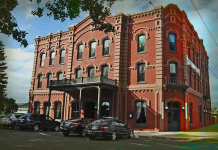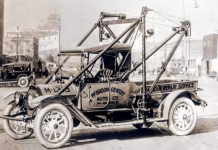The early 1860s witnessed a remarkable influx of migrants to the Idaho Territory.
The discovery of precious metal at Grasshopper Creek (Bannack) in 1862 and Alder Gulch (Virginia City) in 1863 ignited significant gold rushes, triggering a surge of settlers.
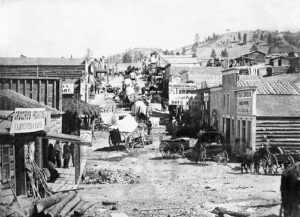
The sheer magnitude of this migration prompted the federal government to establish a new territory known as Montana in May 1864. Subsequently, on July 14, 1864, a group of prospectors known as the “Four Georgians” stumbled upon a gold deposit in a gulch off the Prickly Pear Creek. Their fortunate find led to the establishment a mining camp along a modest creek, which they christened “Last Chance Gulch.”
In 1876, an intrepid prospector with Irish heritage, Thomas Cruse, uncovered a colossal gold deposit in the mountains northwest of Helena. Swiftly securing a mining patent for 20.25 acres, he established the renowned Drumlummon Mine. This remarkable mine yielded a prodigious bounty of gold and silver valued in the millions of dollars.
As autumn descended upon 1864, the population had burgeoned to over 200 inhabitants, and the name “Last Chance” appeared crude to some. On October 30, 1864, at least seven self-appointed individuals convened to bestow a name upon the burgeoning town, establish street layouts, and elect commissioners.
The initial proposal was “Tomah,” a term the committee believed to have connections with the local Native American tribes. Other suggestions included Pumpkinville and Squashtown, given the meeting’s proximity to Halloween.
There were also propositions to name the settlement after various towns in Minnesota, such as Winona and Rochester, owing to the considerable number of settlers hailing from that region.
Eventually, a Scotsman named John Summerville recommended the name Helena, pronounced /həˈliːnə/ hə-LEE-nə, in tribute to Helena Township, Scott County, Minnesota. This suggestion immediately sparked a lively debate among former Confederates present, who insisted on the pronunciation /ˈhɛlɪnə/ HEL-i-nə, after Helena, Arkansas—a town situated on the banks of the Mississippi River.
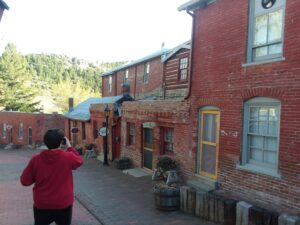
Despite the disagreement, the name “Helena” emerged victorious, though its pronunciation remained subject to variation until approximately 1882 when the /ˈhɛlɪnə/ HEL-i-nə pronunciation ultimately prevailed.
An interesting note here would be that though the Confederates won out on the name, Helena in the south even today is pronounced as hə-LEE-nə, lending to the once referenced Scott County, Minnesota pronunciation.
In 1865, Captain John Wood undertook the first survey of Helena, determining its layout. Reflecting the paths forged by the diligent miners, the original streets of Helena assumed diverse sizes and shapes, giving rise to a mosaic of city blocks in Early Helena.
By 1888, an impressive cohort of 50 millionaires had established their residence in Helena, surpassing the per capita millionaire count of any other city in the world. These individuals had amassed their fortunes from the abundant gold in the area.
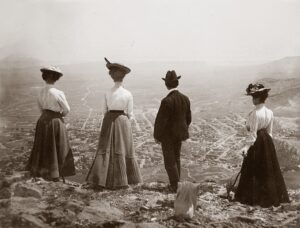
An astonishing $3.6 billion in today’s currency was estimated to be extracted from Helena during this prosperous era. The Last Chance Placer, one of the most renowned placer deposits in the western United States, witnessed its peak production before 1868. Much of this placer deposit now lies beneath the streets and structures of Helena.
This concentration of wealth catalyzed the development of exquisite residences and ambitious architecture, leaving an indelible mark on the city’s Victorian neighborhoods.
Helena has held the distinction of being the capital of Montana Territory since 1875 and became the seat of the state of Montana upon its establishment in 1889.
sourced:
Hidden History of Helena, Montana — by Ellen Baumler & Jon Axline

